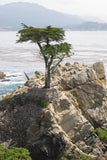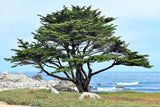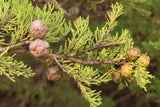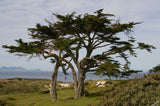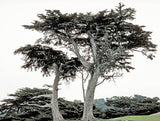Hesperocyparis macrocarpa Seeds – Monterey Cypress: The Coastal Sentinel
Embrace the rugged elegance of the California coast with Hesperocyparis macrocarpa, commonly known as Monterey cypress. This majestic evergreen conifer, native to the Monterey Peninsula, stands as a testament to resilience and natural beauty. With its graceful form and rich cultural heritage, Monterey cypress is a standout choice for gardeners seeking a plant that combines aesthetic appeal with environmental value.
Botanical Profile
-
Bloom Color: The Monterey cypress produces small, inconspicuous cones that are brown when mature. These cones are essential for seed production, though the tree's primary ornamental value lies in its foliage and form.
-
Hardiness: Monterey cypress thrives in USDA Hardiness Zones 7a through 10a, making it suitable for a range of coastal and temperate climates.
-
Size: This tree can reach heights of 70 to 90 feet, with a spread of 40 to 50 feet, forming a broad, spreading crown as it matures.
Ecological and Wildlife Benefits
While the Monterey cypress is primarily valued for its structural beauty and windbreak capabilities, its dense foliage provides shelter for various wildlife species. The tree's cones, though not a significant food source, may attract certain bird species interested in seeds. Additionally, the tree's evergreen nature offers year-round cover for birds and small mammals.
Cultural Significance
The Monterey cypress holds a special place in California's cultural landscape. The iconic "Lone Cypress" at Pebble Beach is one of the most photographed trees in the world, symbolizing the enduring spirit of the California coast. Historically, the wood of the Monterey cypress has been used for various purposes, including construction and furniture making, due to its durability and resistance to decay.
Planting and Care Tips
-
Sun Exposure: Prefers full sun to partial shade.
-
Soil: Thrives in well-drained soils, including clay, loam, and sand.
-
Watering: Requires moderate watering; drought-tolerant once established.
-
Maintenance: Low maintenance; remove dead or damaged branches to maintain appearance.
Whether you're looking to enhance your garden's aesthetic appeal or support local wildlife, Hesperocyparis macrocarpa offers a unique combination of beauty, resilience, and cultural richness.






